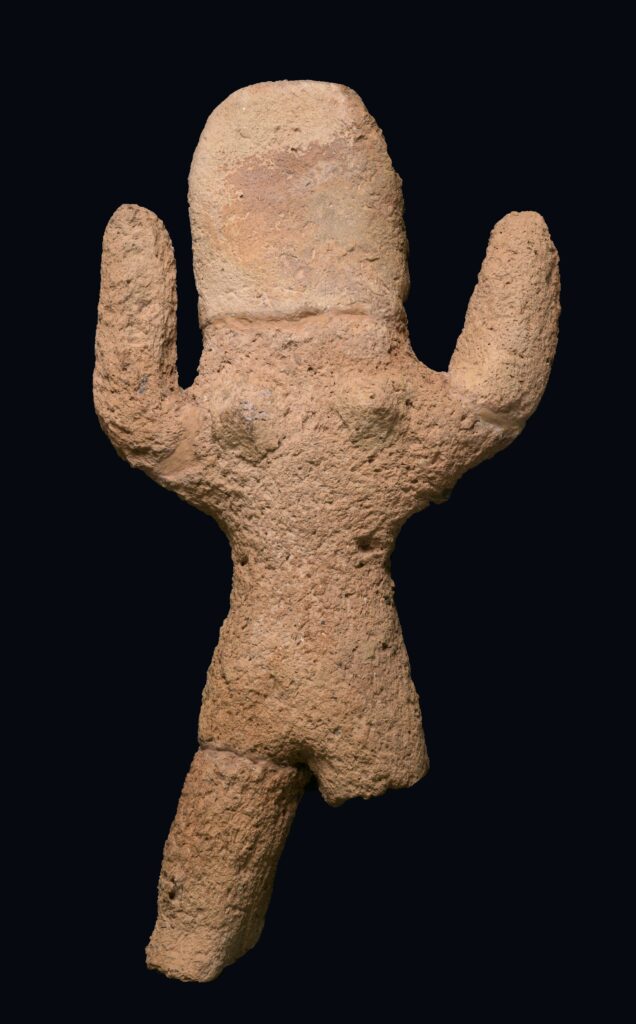
Muslim Magical Artifacts found in the Eilat Mountains in Southern Israel
A research paper has concluded that artifacts discovered in the Eilat Mountains in the late 1990s were employed in magical rituals during the early Ottoman Period.
The artifacts were discovered near Eilat on a stretch of the Muslim pilgrimage road leading from Cairo to Mecca in Saudi Arabia. Researchers discovered remains of the road, camps, and other associated structures dating back to the Mamluk and Ottoman periods about four centuries ago.
The researchers conjectured that these artifacts were employed in magical rituals carried out in order to ward off the evil eye, heal diseases, and more. According to the researchers, “This discovery reveals that people in the Early Ottoman Period—just as today—consulted popular sorcerers, alongside the formal belief in the official religion.”

In one camp labeled Netafim 2, located on the ancient Darb al-Hajj route in the Eilat mountains of southern Israel, an assemblage of unusual objects was found, including fragments of clay rattles resembling table tennis balls, which contained small stones that produced sound when shaken. Two artifacts resembling miniature votive incense altars were found, along with several figurines, including one of a naked woman or goddess with raised hands. Also found was a cluster of colored quartz pebbles and some seashells, which researchers determined originated in Egypt.
The Darb al-Hajj began in Cairo, crossed the Sinai Peninsula, continued through the Eilat region, and eventually reached the town of Aqaba before continuing into the Arabian Peninsula. The route was in use from the early days of Islam, starting in the 7th century CE, and remained in use until the 19th century CE.
A network of wells, rest areas, and oases was developed along the route to support pilgrimage and trade traffic. Many of these historic rest stops and wells can still be found along the route.
In the vicinity of the Eilat mountains, several camping sites and structures for pilgrims have been discovered. These structures typically served during the Mamluk and Ottoman periods, beginning in the 13th or 14th centuries CE.
A research paper recently published in the Journal of Material Cultures in the Muslim World by Dr. Itamar Taxel of the Israel Antiquities Authority, Dr. Uzi Avner of the Dead Sea-Arava Science Center, and Dr. Nitzan Amitai-Preiss of the Hebrew University of Jerusalem, analyzed some of these artifacts.
“The artifacts were discovered by Moti Shemtov, a resident of Eilat, and subsequent to these finds, an archaeological excavation was directed at the site by Uzi Avner and Asaf Holzer, on behalf of the Israel Antiquities Authority (IAA),” a media release stated. According to the IAA, the discovery marked the first time such a substantial assembly of ritual objects of this nature had ever been found, especially at a temporary site rather than a permanent settlement.
The artifacts were found next to the Pilgrimage Road (Darb al-Hajj, in Arabic) that led from Cairo, crossed the Sinai Peninsula, and continued in the region of Eilat to the town of ‘Aqaba, and then crossed the Arabian Peninsula. This route was in use from the first centuries after the rise of Islam, from the 7th century CE and down to the 19th century CE. Several camping sites and structures that served the pilgrims have been uncovered in the area of the Eilat Mountains. It seems that the main period of time that these structures functioned was in the Mamluk and Ottoman periods, from the thirteenth or fourteenth centuries CE onwards.
“The find-spot of these artifacts next to the camping site, and the comparison of the artifacts to those known in the Muslim world, as well as the fact that these artifacts were found together as a group, lead to the understanding that they were used in magical rituals. The artifacts were found broken, and they may even have been purposely broken in the ceremonies. It seems that these rituals were carried out at the site by one or several people who specialized in popular magical ceremonies. From the literary sources, we know that there was a demand for magical rituals among people from different strands of society. Such rituals were carried out daily alongside the formal religious rituals—including in the Muslim world—and it is probable that the pilgrims making their way to the holy cities of Mecca and Medina were no exception,” say the researchers.
According to Dr. Omry Barzilai, Southern Regional Archaeologist of the Israel Antiquities Authority, the “Darb el-Haj” road runs through the municipal boundaries of Eilat. The road and adjacent archaeological sites are to become part of a unique regional archaeological-touristic area promoted by the Ministry of Tourism. The Israel Antiquities Authority will undertake the development and accessibility of the road and intends to organize educational activities for the public emphasizing its cultural heritage role”.
According to Eli Escusido, Director of the Israel Antiquities Authority, “In the Israel Antiquities Authority, we make great efforts to research and publish finds from previously unpublished excavations that were carried out in the past.”
The post Muslim Magical Artifacts found in the Eilat Mountains in Southern Israel appeared first on Israel365 News.
Israel in the News